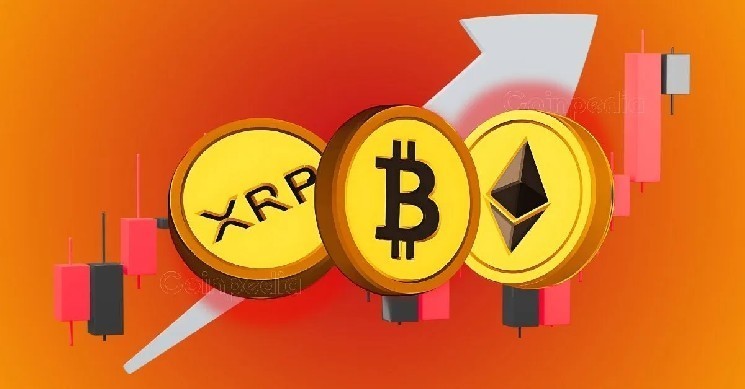The decentralized finance economy runs on something known as “liquidity”, which refers to the funds provided by protocol users to keep their engines ticking over. These liquidity pools are the lifeblood of DeFi applications, enabling users to swap tokens, lend and borrow funds, and more.
At the time of writing, there is currently more than $100 billion of value locked into hundreds of DeFi liquidity pools. The vast majority of these pools are what fuel the token trades on decentralized exchange platforms. They’re created when users lock two kinds of crypto into a smart contract, providing the capital needed for others to buy and sell these assets.
Why Do DEXs Need Liquidity?
If a token pair on a decentralized exchange has low liquidity, it causes a problem known as “slippage”, which is where the trader will see a noticeable difference between the expected token price before they make a trade and the actual token price after they execute it.
This slippage occurs when there’s not enough liquidity in the pool to process the user’s order at once. The lack of liquidity means the order will be processed in various stages, and at each stage, the balance of the tokens in the pool changes, altering their price. But if a pool has lots of liquidity, slippage isn’t noticeable. Instead, its users will be able to buy and sell those tokens rapidly without any significant price impact. These pools are therefore essential for the smooth operations of DEX platforms, and that explains why they provide strong incentives for people to deposit liquidity into them.
Providing liquidity can be a lucrative business for investors, as most DEX platforms offer strong incentives to depositors. Essentially, anyone who deposits liquidity into a pool gets a proportional share of the rewards that come from the fees applied to each trade on the platform. The actual fees and incentives offered vary from platform to platform.
Additionally, investors will usually receive “liquidity provider tokens” or LP tokens, which are receipt tokens that represent their share of the liquidity pool. These can be redirected into other DeFi protocols to earn additional yield.
How To Provide Liquidity?
To get started, you’ll need to identify the platform you wish to deposit funds on. Some of the most popular DEXs include Uniswap, SushiSwap, Curve, Balancer, and PancakeSwap. Your choice really depends on what’s best for you, taking into account your familiarity with the platform, its ease of use, the token pairs it offers, the advertised yield, and so on.
For the unfamiliar, there are various websites, including CoinMarketCap and Pools, which provide tools for comparing the rewards offered by different liquidity pools on DEX platforms.
Once you’ve identified a platform, you’ll need to connect your crypto wallet to the DEX. Popular wallets such as MetaMask, Trust Wallet, and Exodus are recommended, as these are compatible with most of the top DEX platforms. Then, you simply work down the list of liquidity pools on that DEX and check the rewards on offer, while taking into account the risks associated with each token.
As a rule, the incentives are often much higher with more obscure tokens, but depositing into these pools also carries a higher risk.
In most cases, you’ll need to buy an equal amount of the two tokens so you can deposit funds on both sides of the pool to help maintain its balance. For instance, if you want to put $500 in SushiSwap’s ETH/USDT liquidity pool, you’ll need to purchase $250 worth of ETH and $250 worth of USDT.
Once you’ve identified the pool you wish to join and have the necessary funds, the next step is to go ahead and make the deposit. Depending on the DEX, you may need to set up a proxy contract or sign a transaction message before you can do this. This is usually a one-time action, and all you have to do is click “confirm” when prompted to do so by your wallet. This step may incur gas fees.
Be sure to triple-check the wallet address where you’re sending the funds, to ensure it’s a legitimate DEX-owned wallet. Because most crypto transactions are irreversible, you can’t afford to make a mistake. Once the transaction has been confirmed, you’ll receive the LP tokens for that specific pool.
Most DEXs will automatically deposit any transaction fees charged to traders back into their respective liquidity pools, so liquidity providers only earn their rewards once they redeem their original deposit.
How To Maximize Liquidity Pool Yields?
The emergence of liquidity pools has led to the rise of “yield farming”, where users constantly move their funds across different pools, chasing the highest possible yields on offer. However, it has become increasingly difficult to maximize yield farming strategies due to the ever-expanding complexity of the DeFi landscape.
Protocols are constantly adjusting their incentives in real time, and there are literally hundreds of DEXs and thousands of liquidity pools to choose from. So it’s simply not possible for humans to stay on top of everything and ensure their capital is always in the most profitable pools. We lack the cognitive capacity to do this, and we also need to sleep!
Enter AI agents, which provide a clever solution to this problem. AI has the advantage of never needing to go to sleep, and it can continuously monitor hundreds of protocols across dozens of blockchains to identify the most profitable liquidity providing opportunities around.
For instance, Giza Protocol’s AI agent ARMA is an autonomous yield-optimization agent that’s designed to help investors maximize their profits when providing liquidity to stablecoin pools across networks such as Base and Mode Network.
It works by monitoring DeFi protocols such as Aave, Morpho, Moonwell and Compound, keeping a constant watch on the fluctuating incentives these platforms provide. Its goal is to ensure that its users’ funds are always earning the maximum possible profit. If the user’s funds are currently deposited into the USDC/ETH pool on Aave, and it suddenly spots that Compound is offering a better rate in its USDC/ARB pool, it can immediately withdraw those funds from the first pool and deposit them into the second to ensure they’re benefiting from that higher rate.
Even better, ARMA doesn’t just look at the rewards on offer, but it also sizes up the costs involved for moving the user’s funds. If the additional gas fees mean that the user won’t make any more profit, the swap. Giza says ARMA can be an incredibly effective tool, with one of its studies showing that it was able to generate an 83% increase in yield versus maintaining a static position in just one liquidity pool. No wonder then, that ARMA already boasts more than $1.16 million in user funds under management.
Are There Any Risks?
Providing liquidity in DeFi can be extremely profitable, but users should be wary that it isn’t always so. Although you’re guaranteed to earn a share of the fees everyone executes a trade using that pool, other factors can impact your profitability.
The biggest risk associated with liquidity pools is a phenomenon known as “impermanent loss”, which refers to when the ratio of tokens in a pool becomes unbalanced due to substantial price changes in the underlying assets. If this happens, the value of the user’s funds could crash significantly. The threat of impermanent loss should not be ignored, with one 2021 study by Bancor finding that more than half of all liquidity providers on Uniswap were losing money in dollar terms, even as they collect trading fees.
Most experts say that bull markets present the best opportunity for liquidity providers, as trading activity tends to increase significantly, and the price of the underlying assets may also increase. This helps to counter the effects of impermanent loss. But in bear markets, the reverse is true.
The Lifeblood Of DeFi
Because liquidity pools are still a relatively new concept, they have attracted almost as much skepticism as they have speculation. It’s fair to say that investors can generate a significant passive income from providing liquidity to DeFi exchanges, but doing so can also be very risky. Besides impermanent loss, there’s the risk of rug pulls and smart contract failures, which can result in investors losing all of their funds.
Nonetheless, liquidity is the lifeblood of DeFi, absolutely critical for protocols to operate, and so long as DeFi exists, there will always be incentives on offer for people willing to provide it. Moreover, DeFi protocols are constantly innovating and coming up with more creative mechanisms to mitigate the risks of impermanent loss.














Leave a Reply